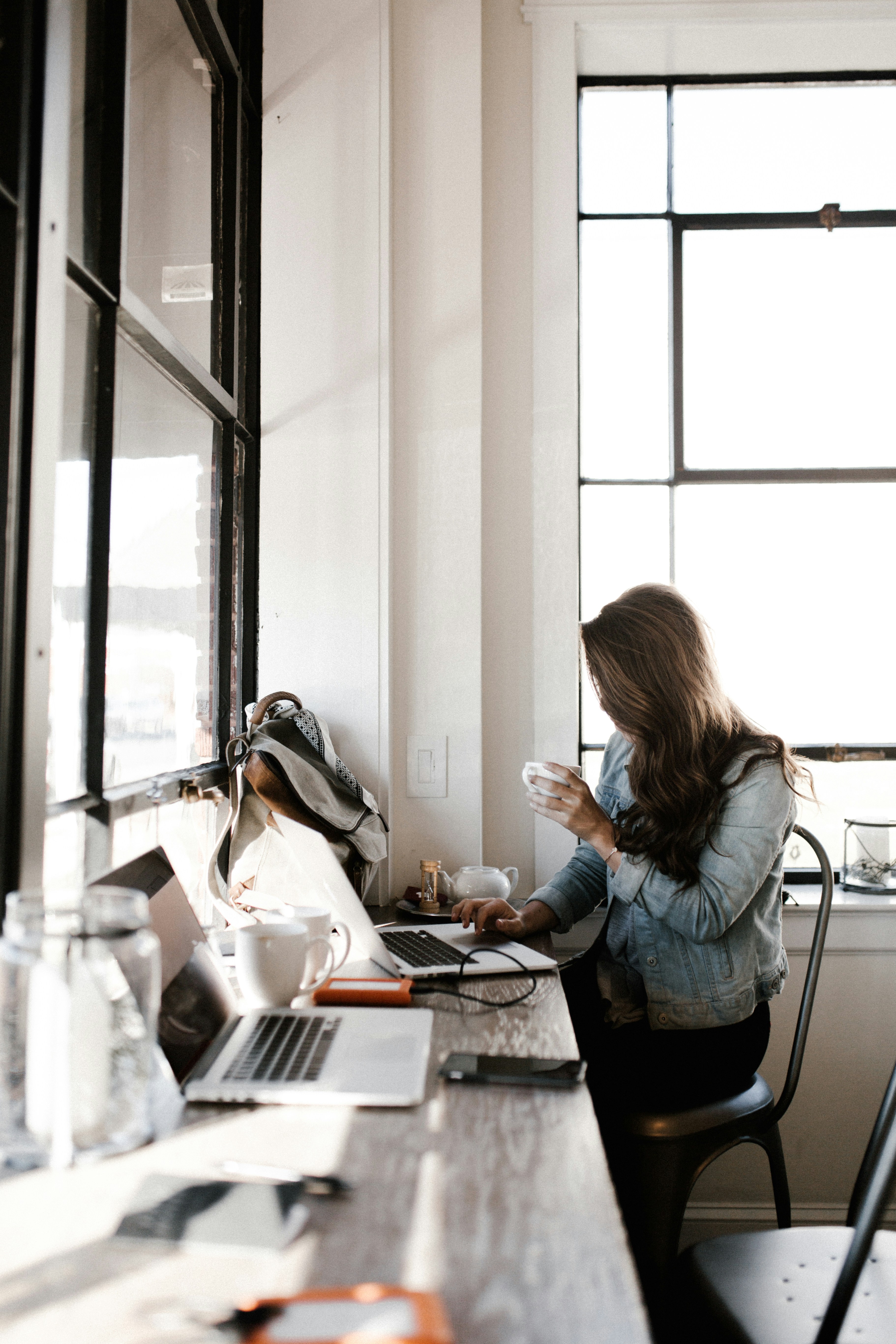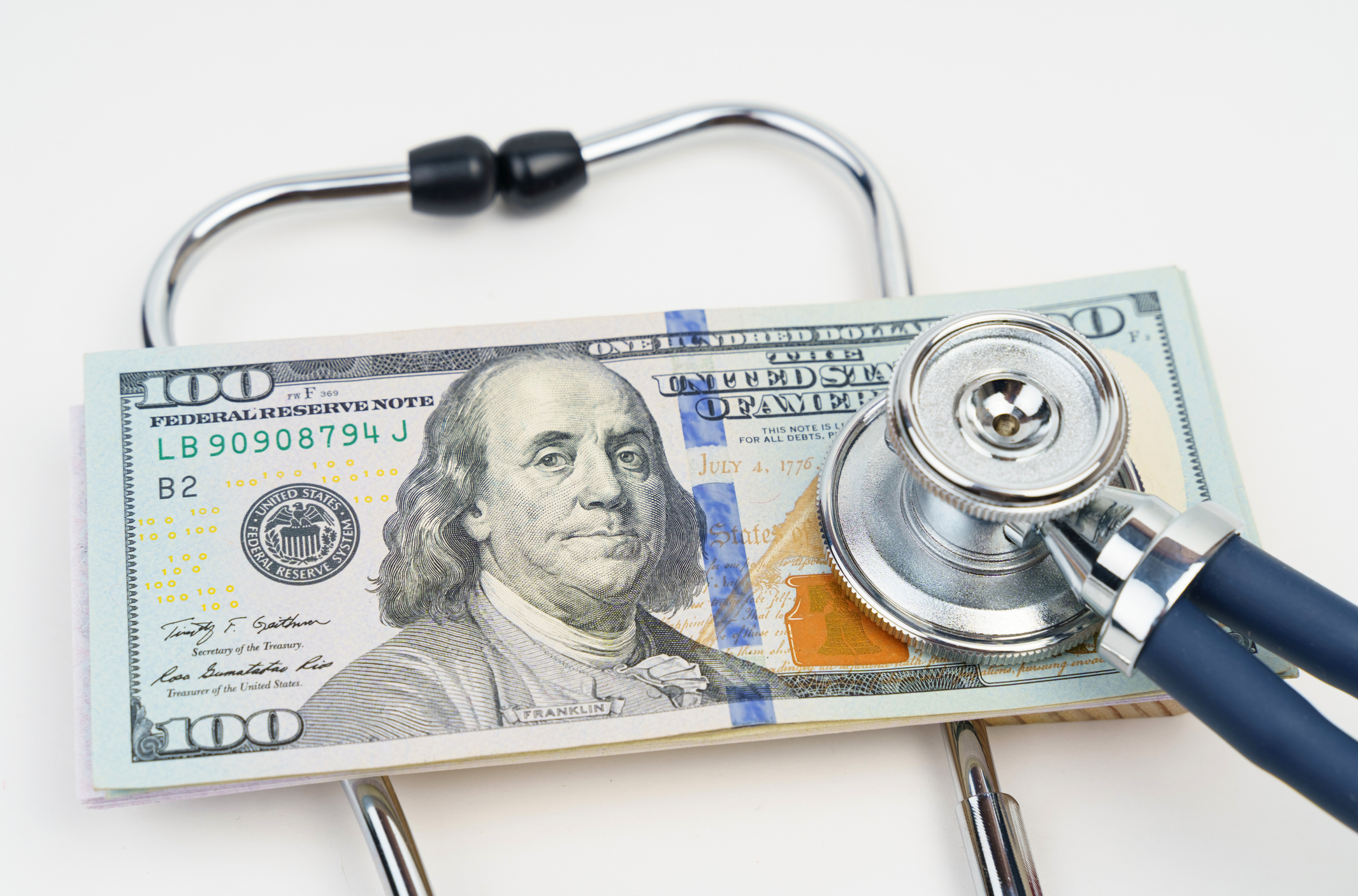But wide gaps persist in how nation fights back
Striking changes in lifestyles and moods have swept across the United States in barely more than a month since the Coronavirus invaded the nation, as people retreat from each other, change the way they work and play, and fall into a widespread funk of worry and isolation.
A new survey by HealthCare.com has found that the vast majority of the public are now staying away from public places (including malls and places of worship), while almost seven in 10 say they are avoiding close contact (i.e., staying at least six feet away from others — 69%). Some are even pulling back from physical or intimate contact with friends and family (24%).
On multiple fronts, the survey uncovered wide gaps in the way people see the crisis roughly six weeks after it began spreading across the nation. Less-educated, poorer and younger people appear to be changing their behavior in more limited ways, holding a dimmer view of the effectiveness of flattening the curve than college-educated, wealthier or older adults. That raises concerns about how fast the virus could keep spreading.
!function(e,i,n,s){var t=”InfogramEmbeds”,d=e.getElementsByTagName(“script”)[0];if(window[t]&&window[t].initialized)window[t].process&&window[t].process();else if(!e.getElementById(n)){var o=e.createElement(“script”);o.async=1,o.id=n,o.src=”https://e.infogram.com/js/dist/embed-loader-min.js”,d.parentNode.insertBefore(o,d)}}(document,0,”infogram-async”);There also appears to be some reluctance to take virus-avoidance measures further as just one in five (19%) of U.S. adults reported wearing masks or gloves in public.
But overall, 85% of the nation says social distancing will help quell the pandemic and 73% say they agree with medical experts that taking action to “flatten the curve” and spread out the pandemic’s impact will ease the burden on the healthcare system, the survey revealed.
Seven in 10 people who answered the survey say they are avoiding public places (69%), keeping at least six feet away from others when out of their homes (69%) and washing their hands more often (67%). (A March survey by HealthCare.com found only 20% of adults avoided public places while 44% washed their hands.)
As they practice social distancing, slightly more than half (56%) of U.S. adults say their daily “screen time” has increased compared to before the outbreak. One in 10 say they’ve started new hobbies.
However, 46% of U.S. adults report worrying more. Twenty-nine percent of U.S. adults have felt more sad or depressed. They have felt feel more isolated and lazier (25%). Just under a quarter (24%) say they avoid touching or being intimate with family and friends.
A handful confessed to drinking (9%) or using other drugs (6%) more than before the virus hit. Some 20% say they have become more spiritual or increased the time they spend praying.
In short, the survey revealed large chunks of a staggered nation struggling to adjust to a societal crisis unlike anything most have experienced in their lifetimes.
In seeking to find out how life has changed across America, the survey asked a range of questions connected to people’s behaviors and moods, breaking down the results by age, education, wealth, gender, and other factors.
!function(e,i,n,s){var t=”InfogramEmbeds”,d=e.getElementsByTagName(“script”)[0];if(window[t]&&window[t].initialized)window[t].process&&window[t].process();else if(!e.getElementById(n)){var o=e.createElement(“script”);o.async=1,o.id=n,o.src=”https://e.infogram.com/js/dist/embed-loader-min.js”,d.parentNode.insertBefore(o,d)}}(document,0,”infogram-async”);Among the broadest findings, the survey showed that 69% of U.S. adults have avoided public places, 69% have stayed at least six feet away from others and 67% wash their hands more often.
Just under a third (31%) have canceled travel plans and 58% have stayed in their home, at various points, for at least two days in a row. Just under a quarter (23%) have stockpiled food.
!function(e,i,n,s){var t=”InfogramEmbeds”,d=e.getElementsByTagName(“script”)[0];if(window[t]&&window[t].initialized)window[t].process&&window[t].process();else if(!e.getElementById(n)){var o=e.createElement(“script”);o.async=1,o.id=n,o.src=”https://e.infogram.com/js/dist/embed-loader-min.js”,d.parentNode.insertBefore(o,d)}}(document,0,”infogram-async”);At the same time, wearing protective covering has yet to become a national habit: one in five have worn wear rubber gloves (19%) or a face mask (21%) in public.
!function(e,i,n,s){var t=”InfogramEmbeds”,d=e.getElementsByTagName(“script”)[0];if(window[t]&&window[t].initialized)window[t].process&&window[t].process();else if(!e.getElementById(n)){var o=e.createElement(“script”);o.async=1,o.id=n,o.src=”https://e.infogram.com/js/dist/embed-loader-min.js”,d.parentNode.insertBefore(o,d)}}(document,0,”infogram-async”);In a sign of how the official number of cases is likely to understate the true scope of illness raging across the nation, just 4% of U.S. adults said they had been tested for the virus.
To fill the void left by normal life gone into limbo, more than half (56%) of U.S. adults say they have increased their “screen time,” with over a quarter (28%) estimating that they’ve upped it by more than four hours a day.
Looking at online behaviors U.S. adults have engaged in since the outbreak, the highest percentages report browsing social media (58%), watching movies (49%), talking to friends and loved ones (44%), reading or watching videos about the Coronavirus in the news (43%), and playing games (40%). Nearly four in 10 (38%) said they read or watch the news more often due to the Coronavirus outbreak, and more than one in five (22%) are shopping online more. Nearly a quarter (24%) is going online to work from home, with one in nine (11%) doing schoolwork online.
!function(e,i,n,s){var t=”InfogramEmbeds”,d=e.getElementsByTagName(“script”)[0];if(window[t]&&window[t].initialized)window[t].process&&window[t].process();else if(!e.getElementById(n)){var o=e.createElement(“script”);o.async=1,o.id=n,o.src=”https://e.infogram.com/js/dist/embed-loader-min.js”,d.parentNode.insertBefore(o,d)}}(document,0,”infogram-async”);As people try to stifle daily activity, their mood has taken a dark turn, with almost half (46%) saying they felt more anxious, worried or nervous. Between one in three and one in six reported increased feelings of isolation (32%), depression or sadness (29%), loneliness (20%), or anger (18%). Some 25% say they’ve felt more lazy. Only a quarter (25%) of U.S. adults profess no increase in negative feelings.
But amid the spreading pandemic, the country is far from changing in lockstep, as age, education, wealth and gender provide stark lines of demarcation as well as warning signs about the virus’s continued potential to further ravage the nation.
Age Gaps on Precautions, Work and Play
Among people 55 and older — including Baby Boomers — roughly nine in 10 (91%) people say social distancing will help reduce the spread and over three quarters (77%) say flattening the curve will help reduce the burden on the healthcare system in the United States. Those same views are held by just under eight out of 10 (79%) and two-thirds (66%), respectively, of those aged 18 to 34 years old, who include most of the Millennial generation.
Wider gaps emerged on the issue of safety precautions, raising the possibility that younger people are more likely to unwittingly spread the virus. Almost eight in ten of older U.S. adults say they’ve avoided public places (78%) or getting closer than six feet from others (79%), and that they’ve started washing their hands more often (77%) compared to just 58%, 55%, and 57% of people 18 to 34.
!function(e,i,n,s){var t=”InfogramEmbeds”,d=e.getElementsByTagName(“script”)[0];if(window[t]&&window[t].initialized)window[t].process&&window[t].process();else if(!e.getElementById(n)){var o=e.createElement(“script”);o.async=1,o.id=n,o.src=”https://e.infogram.com/js/dist/embed-loader-min.js”,d.parentNode.insertBefore(o,d)}}(document,0,”infogram-async”);Overall, 37% of younger adults say their “screen time” has increased at least four hours a day, versus just 21% of older people.
Almost three in 10 (28%) of people in the younger group reported they’ve worked online from home since the outbreak began, compared to 15% of older people. The same trend extends to leisure time: strong percentages of the mostly-Millennial group say they are watching movies or shows via streaming services (56%), playing games (45%) or kept up on virus-related news online (48%), versus 39%, 35%, and 36%, respectively, of Baby Boomers and other older U.S. adults.
Younger people also are more likely than their older counterparts to report an increase in working out at home (24% vs 10%), with the same holding true for finding new hobbies (17% to 5%) and using more alcohol (10% vs. 6%) and recreational drugs (9% vs. 3%).
The extra online activities, exercise, new pursuits and partying, however, has not brightened young people’s moods. While the state of mind has worsened for all age groups, higher percentages of 18-to-34-year-olds reported feeling more anxious/nervous/ worried (48%), sad/depressed (33% vs. 26%), lonely (29% vs. 15%), or lazy (34% vs. 19%) than U.S. adults 55 and older.
Older adults, meanwhile, are more likely than their younger counterparts to say they’ve prayed more or become more spiritual (25% versus 15%).
Coronavirus Socio-Economic Divide
The less educated and poorer people are, the less they report believing in recommended protections.
For example, 81% of adults who have no more than a high school degree and 83% with annual incomes under $40,000 say social distancing will help reduce the number of infections compared to 92% and 91%, respectively, of people with four-year college degrees or incomes of at least $80,000.
Gaps of 10 to 15 percentage points emerge in practicing recommended behaviors as well, especially on questions about avoiding public spaces, keeping at least six feet away from others and washing hands more often, with consistently lower rates among those with less education and lower incomes.
!function(e,i,n,s){var t=”InfogramEmbeds”,d=e.getElementsByTagName(“script”)[0];if(window[t]&&window[t].initialized)window[t].process&&window[t].process();else if(!e.getElementById(n)){var o=e.createElement(“script”);o.async=1,o.id=n,o.src=”https://e.infogram.com/js/dist/embed-loader-min.js”,d.parentNode.insertBefore(o,d)}}(document,0,”infogram-async”);For example, 65% of adults with a high school diploma or less have avoided public spaces, compared to 79% with college degrees; 64% of people whose income is less than $40,000 have avoided public areas versus 76% of those making more than $80,000.
More-educated and wealthier U.S. adults also are more likely to have stockpiled food, to have worked from home, and to have participated in most of the online activities tested. In one of the survey’s widest disparities, just 16% and 12%, respectively, of lower-income and less educated people have worked from home since the outbreak began, compared to 42% to 44%, respectively, of higher earners and those with four-year degrees.
However, high-school-educated (or less) and poorer Americans appear more sanguine about the crisis: they’re more likely than their counterparts to say they’ve prayed more or become more spiritual (23% and 22%, respectively, vs. 16% and 18%), and are less likely to report increases in almost every negative emotion listed in survey questions.
“These results, showing that adults with no more than high school education and lower incomes are more likely to be in public places and less likely to work at home, are an important reminder to thank those on the front lines delivering our mail, stocking our grocery shelves, nursing our sick and vulnerable,” said Frank Lalli, NPR’s Heath Care Detective for Robin Hood Radio. “And, yes, they are praying more as they serve their communities in essential but risky low-pay jobs.” Lalli also serves on HealthCare.com’s expert review board.
Women More Affected Than Men
The virus appears to be affecting women more than men.
Women are more likely to have avoided public places than men (73% versus 66%), stayed at least six feet away from others (71% to 66%) and remained at home for stretches of at least two days in a row (65% compared to 51%).
Women are also more likely than men to report that they’re washing their hands more often (70% to 64%) and that they’ve worn rubber gloves in public (23% to 18%).
Moreover, women are more likely than men to have spent time on social media since the outbreak more than men (63% to 52%) or spoken to friends and loved ones online (47% to 41%). Their moods are more likely to have spun downward, mostly when it comes to feeling anxious, nervous or worried (49% to 43%), feeling sadder or more depressed (32% to 25%) and feeling lazier (28% to 21%). Men were a bit more likely to report being angrier (20% versus 16%).
!function(e,i,n,s){var t=”InfogramEmbeds”,d=e.getElementsByTagName(“script”)[0];if(window[t]&&window[t].initialized)window[t].process&&window[t].process();else if(!e.getElementById(n)){var o=e.createElement(“script”);o.async=1,o.id=n,o.src=”https://e.infogram.com/js/dist/embed-loader-min.js”,d.parentNode.insertBefore(o,d)}}(document,0,”infogram-async”);Methodology
Healthcare.com commissioned YouGov Plc to conduct the survey. All figures, unless otherwise stated, are from YouGov Plc. Total sample size was 2,491 adults. Fieldwork was undertaken on April 1-3, 2020. The survey was carried out online and meets rigorous quality standards. It employed a non-probability-based sample using both quotas upfront during collection and then a weighting scheme on the back end designed and proven to provide nationally representative results. The survey has a margin of error of two percentage points, plus or minus. The figures have been weighted and are representative of all US adults (aged 18+).




